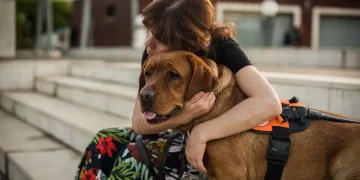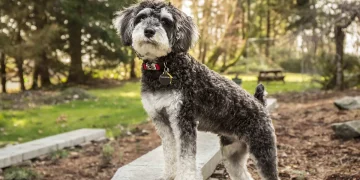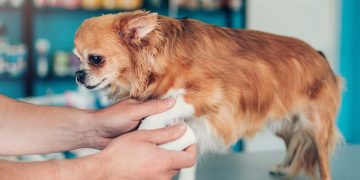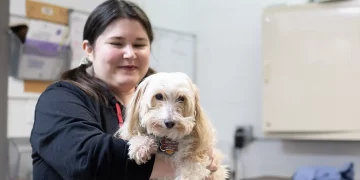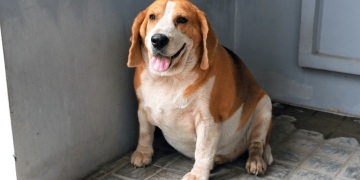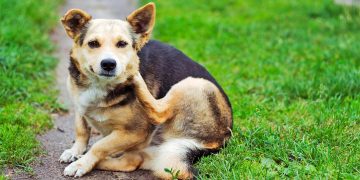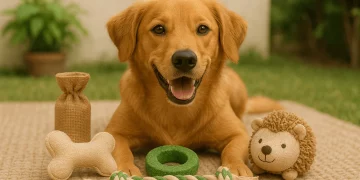When most people think of grooming their dog, they imagine shiny coats, clean paws, trimmed nails, and fresh-smelling fur. But beyond the cosmetic benefits, grooming routines offer something far more important for many dogs: emotional support. For puppies, rescue dogs, and anxious adult pets, grooming can become a powerful tool to reduce fear, build routine, and strengthen the bond between human and animal. In 2025, as more pet parents embrace holistic approaches to animal care, grooming is no longer just about cleanliness—it’s an opportunity for behavioral shaping, emotional regulation, and mutual trust-building.
Grooming as Desensitization Training
At its core, grooming is a form of structured desensitization. By exposing your dog gently and gradually to the sensations of brushing, bathing, paw handling, and even blow-drying, you’re teaching them that human contact—even in unfamiliar or slightly uncomfortable forms—is safe. This process mirrors how desensitization is used in behavior modification therapy: repeated exposure in a calm environment reduces the novelty and associated fear.
For example, many dogs fear having their paws touched, making nail trimming stressful. But by gently stroking their paws for just a few seconds every day, rewarding calm behavior with praise or treats, you slowly rewire their response. What once triggered anxiety becomes mundane. Over time, the grooming tools themselves—brushes, clippers, towels—stop signaling danger and start signaling a peaceful, reward-filled experience.
Even more importantly, grooming teaches your dog that restraint (being held still) doesn’t mean something bad will happen. This can be crucial for future veterinary exams, medication administration, or emergency care. Grooming becomes a safe rehearsal for life’s unpredictable moments.
Why Puppies Benefit from Early Grooming Rituals
Puppies are blank slates. Every touch, sound, and experience contributes to their lifelong impression of the world. Introducing grooming early is one of the best ways to build resilience, trust, and cooperation.
Start with short, positive sessions even before they need a real bath or trim. Let them sniff the brush. Run a soft cloth over their back. Touch their ears, paws, and tail gently while speaking in a calm tone. Offer treats and soothing praise. These tiny moments create powerful associations between touch and safety.
The key during puppy grooming is predictability. When done regularly, grooming becomes just another part of their day—like feeding or going outside. This prevents grooming from becoming a “rare event” that signals something unusual or stressful. A two-minute brushing session after a walk or a weekly paw check-in becomes part of life’s rhythm.
For certain breeds that require regular grooming (like Poodles, Maltese, or Bichons), early desensitization can prevent lifetime fear-based behaviors. Groomers often see adult dogs who were never exposed to clippers or dryers as puppies and now react with shaking, growling, or attempts to flee. Establishing routine touch early reduces that risk dramatically.
Helping Rescue Dogs Through Predictable Grooming
Dogs from shelters or traumatic backgrounds often struggle with anxiety. They may have never been brushed, had their nails clipped, or been bathed gently. They may associate touch with pain or restraint with fear. For these dogs, grooming rituals can be part of emotional rehabilitation.
Start slow. Use the least intrusive tool first—a soft grooming glove or damp cloth. Focus on building trust, not perfection. Let the dog sniff each item before using it. Begin grooming in a quiet, familiar place where your dog feels safe. Incorporate calming signals—deep breathing, soft voice tones, and relaxed posture. Avoid grooming when the dog is overstimulated or fearful from other events like thunderstorms or new visitors.
For rescues, grooming sessions should be short and sweet. Don’t aim to finish everything at once. You may brush half the body one day and return the next. As long as the experience ends positively—with a treat, a belly rub, or quiet cuddling—you’re reinforcing safety.
Some rescue dogs benefit from calming aids during early grooming, such as pheromone sprays, lavender-scented grooming wipes, or calming chews. These aren’t substitutes for patience and training, but they can help ease the emotional load during the transition period.
Grooming Routines Provide Predictability in an Uncertain World
Dogs thrive on routine. Predictable patterns give them a sense of control and security, especially when other parts of their life change. Grooming routines—like brushing every evening after dinner or bathing once a month on a set day—become emotional anchors. They send the message: “This is familiar. You’re safe. I’m here.”
For anxious dogs, this kind of structured repetition lowers baseline stress. Their body learns to relax during grooming. Their brain associates grooming with calmness. Over time, you may notice reduced reactivity in other areas too: less barking at sounds, better tolerance of handling, quicker recovery from startling events.
In multi-dog households, synchronized grooming can reinforce a shared calm routine. When one dog sees another being brushed calmly, the modeling effect kicks in. This is especially effective when introducing a puppy into a home with a well-adjusted older dog.
The Power of Touch: Why Physical Contact Soothes Dogs
Physical touch is calming for both dogs and humans. Brushing your dog releases endorphins, lowers heart rate, and builds oxytocin—the hormone of bonding. For anxious dogs, touch can interrupt spiraling thoughts, much like a weighted blanket calms an anxious person.

Daily brushing isn’t just about detangling fur. It becomes a mindful ritual. You become more attuned to your dog’s body: noticing new bumps, areas of sensitivity, or signs of injury early. Your dog becomes more receptive to being handled. The mutual comfort strengthens your bond.
For short-haired dogs, touch rituals can include a massage with a soft mitt or grooming cloth. Even 5–10 minutes of focused attention can have long-lasting emotional benefits.
Using Grooming to Reinforce Calm Behavior
Grooming isn’t just desensitization—it’s a platform to reward emotional regulation. During brushing or nail trimming, reward behaviors like stillness, eye contact, relaxed breathing, or a “down” posture. Use your voice, gentle strokes, or small treats to acknowledge calm moments.
Over time, grooming becomes a training session. Dogs learn that cooperation pays off. This mindset transfers to other stressful situations, like car rides, vet visits, or staying home alone. Calm grooming reinforces the idea that stress can be navigated—and that their human is a steady, reassuring presence.
In training language, this is called capturing and reinforcing desirable behaviors. Instead of waiting for your dog to become frantic and trying to “fix” it, you shape a calm emotional state through positive grooming routines.
Grooming Tools That Support Anxiety Reduction
In 2025, a range of tools and products are designed to support calm grooming. Consider:
- Self-warming grooming gloves that mimic the sensation of petting
- Silent clippers and dryers that minimize noise trauma
- Slow feeder mats with peanut butter for distraction during bathing
- Aromatherapy shampoos with chamomile or lavender
- Mat-combing sprays that reduce painful tugging
- Ear-cleaning pads with mild, soothing ingredients
Always match tools to your dog’s sensitivity. Some dogs enjoy vibration tools for brushing, while others find them startling. Let your dog guide the pace.
When Grooming Should Be Done by a Professional
While home grooming is ideal for bonding, some dogs need professional help—especially those with severe anxiety, long grooming requirements, or thick double coats. Choosing a fear-free certified groomer makes a big difference. These professionals use behavior-based handling, take breaks when needed, and know how to work with anxious dogs without triggering panic.
You can support your dog’s comfort at the groomer by doing mock grooming sessions at home. Practice standing on a mat, being lifted onto a table, or having paws held. The more familiar the sensations, the easier the experience.
If your dog has a grooming history that involves fear or trauma, consult a trainer before scheduling a full-service session. A gradual reintroduction plan can prevent setbacks and build trust.
Grooming as a Family Routine
For families, grooming is a way to teach kids empathy, patience, and responsibility. Involve children in brushing sessions or teach them to calmly hand-feed treats while an adult grooms. This not only helps the dog become more comfortable with touch from different people but also deepens the family bond.
Make it a relaxed, regular activity—like reading a bedtime story or going on a walk. Your dog will come to see grooming not as a chore or threat, but as a gentle rhythm of life with their favorite people.
Final Thoughts: Calm Dogs Are Made, Not Born
Anxiety in dogs isn’t a personality flaw—it’s often a response to unknowns, past trauma, or inconsistent care. Grooming routines give anxious dogs a script to follow, a space to feel touch without fear, and a chance to learn that human hands bring comfort, not discomfort. Whether you’re raising a puppy, helping a rescue recover, or just building a better bond with your dog, grooming is more than fur-deep. It’s emotional maintenance. When done with love, grooming teaches your dog that calmness is safe, routine is reassuring, and you are someone they can always trust.




